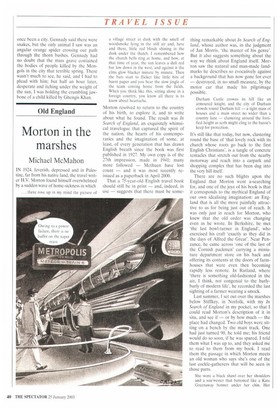Tatar source
Julian Holloway
IN THE 14th century, Timur the Lame led a nomad army against the whole settled world. He plundered from the Ganges to the Dardanelles, but the heartland of his empire lay between two great rivers north of Afghanistan, the Amu Dar'ya and Syr Dar'ya. Today both rivers sink into the sands of what is now the Republic of Uzbekistan. Many ancient cities lie beneath those sands, among them the city of Benaket.
I was in Uzbekistan this summer exploring the life of another great conqueror, Babur, and decided to try to find Benaket. It has an interesting history: as a 13-year-old, Babur came to meet the hostile Mongol Khan, a descendant of Genghis, in a garden outside Benaket's city walls, and made the Khan his ally.
I consulted guidebooks and several historians, but at first it seemed as if the soft bricks of the city had simply melted away. All I discovered was that Benaket had another name, Shahrukhiya, after Timur the Lame's son Shah'rukh. I went home, spread out maps and opened my copy of Babur's memoirs, in which I had first seen mention of Benaket. It gave me just enough to guess that Benaket might be south-west of Tashkent near the Syr Dar'ya.
The next morning I dragged my taxi-loving interpreter on to a bus headed for Chinoz, a town about 40 miles south-west of Tashkent. The people there wanted to help, but my questions got nowhere. Finally the wizened old chairman of the war veterans' association was summoned to the town hall. He answered with a story. In the 1970s, he told me, the municipality had held a competition for the best local history. The prize was a new Volga limousine, the Soviet Mercedes. Everyone wanted it, but no one could find any history. He smiled consolingly over his medals: 'Nobody got the car.'
The interpreter and I found a taxi — a Volga, as it happened — and headed out through the cotton fields. The names Benaket and Shahrukhiya pressed no buttons anywhere, but after two hours crisscrossing the plain someone told us there were ruins on the Skisbayev collective farm.
The sun was crashing down on the roof of the car when we arrived at the site. There were a few melted mud walls, and the only solid structure was a brand-new brick shrine, still in its scaffolding, which stood on the edge of a grove. The builders sat in the shade finishing lunch. One of them gave me a cup of icy watermelon juice and asked what I was doing there. I explained wearily.
'You've arrived,' he replied and introduced himself. He was a curator from the Amir Timur Museum. There were also three people from the Tashkent Institute of Archaeology among the builders, including a professor in red women's spectacles. I was amazed to find so many senior people at such an obscure spot. Even the President, they told me, would be visiting later in the year. I wasn't by any means the only person to be interested in Benaket. The archaeologists were there to reveal the city's physical existence and reclaim it; the curator was there because the archaeologists had found a rare 14th-century suit of armour the year before.
The curator refilled my cup and took me to where a woman sat deep in the shade of an old mulberry tree. There were dark circles around her eyes and she wore large coral earrings. Zafira Eshmirzaeva was at Benaket to check on the progress of the new brick shrine I'd noticed. In fact, the foundation she managed owned the entire site. The shrine turned out to be the tomb of a mediaeval Muslim holy man. One of his miracles had been to make the peace between Timur's sons, including Shah'rukh.
'Beneath each gravestone lies the history of the world,' she said. 'Heinrich Heine wrote that and I have always believed it.' As a Soviet citizen before 1991 Zafira spent her career in the forests of Belarus giving proper burial to the remains of Soviet and German soldiers killed in the second world war. Then, when the Soviet Union dissolved and Uzbekistan was founded, she discovered another outlet for her unusual vocation. The atheistic Soviet Union had systematically destroyed the Muslim past in central Asia and so, to help erase the Soviet legacy, Zafira's foundation was rebuilding the tombs of the Muslim holy men.
I looked through the trees to where the noonday brightness fused with the dust. She was telling me about the first time she'd been to Benaket. She had been sitting alone in the gathering dusk when white light had risen from the ground like smoke and gathered over the saint's grave. 'I knew then that God and the saints accepted the things we are doing here.'
The professor came over and I asked him about Benaket. He fingered his spectacles as he spoke. One day in 1219 the Mongols arrived beneath the walls and laid siege to Benaket. The siege lasted three days and 50,000 people were put to the sword. Genghis Khan had ordered his soldiers to raze the cities that resisted, so the walls were pulled down with ropes.
As I left, Zafira called me. 'Julian, ask Gennady to show you the grave he found.' Gennady was a Russian archaeologist. We walked out on to the wasteland that had once been a city. Gennady said there were snakes, but the only animal I saw was an angular orange spider crossing our path through the thorn bushes. Gennady had no doubt that the mass grave contained the bodies of people killed by the Mongols in the city that terrible spring. There wasn't much to see, he said, and I had to plead with him; but half an hour later, desperate and itching under the weight of the sun, I was holding the crumbling jawbone of a child killed by Ghengis Khan.



















































































 Previous page
Previous page